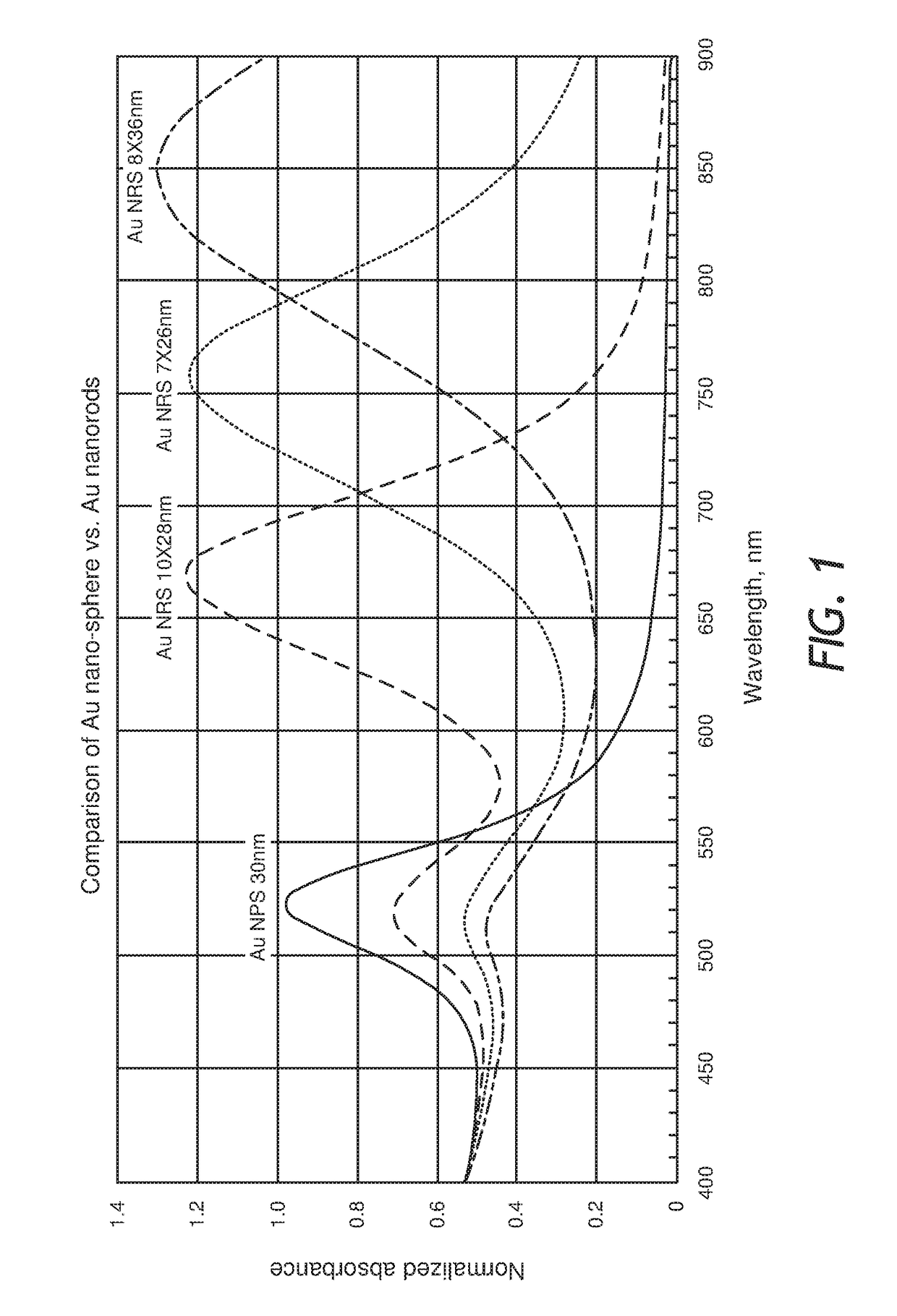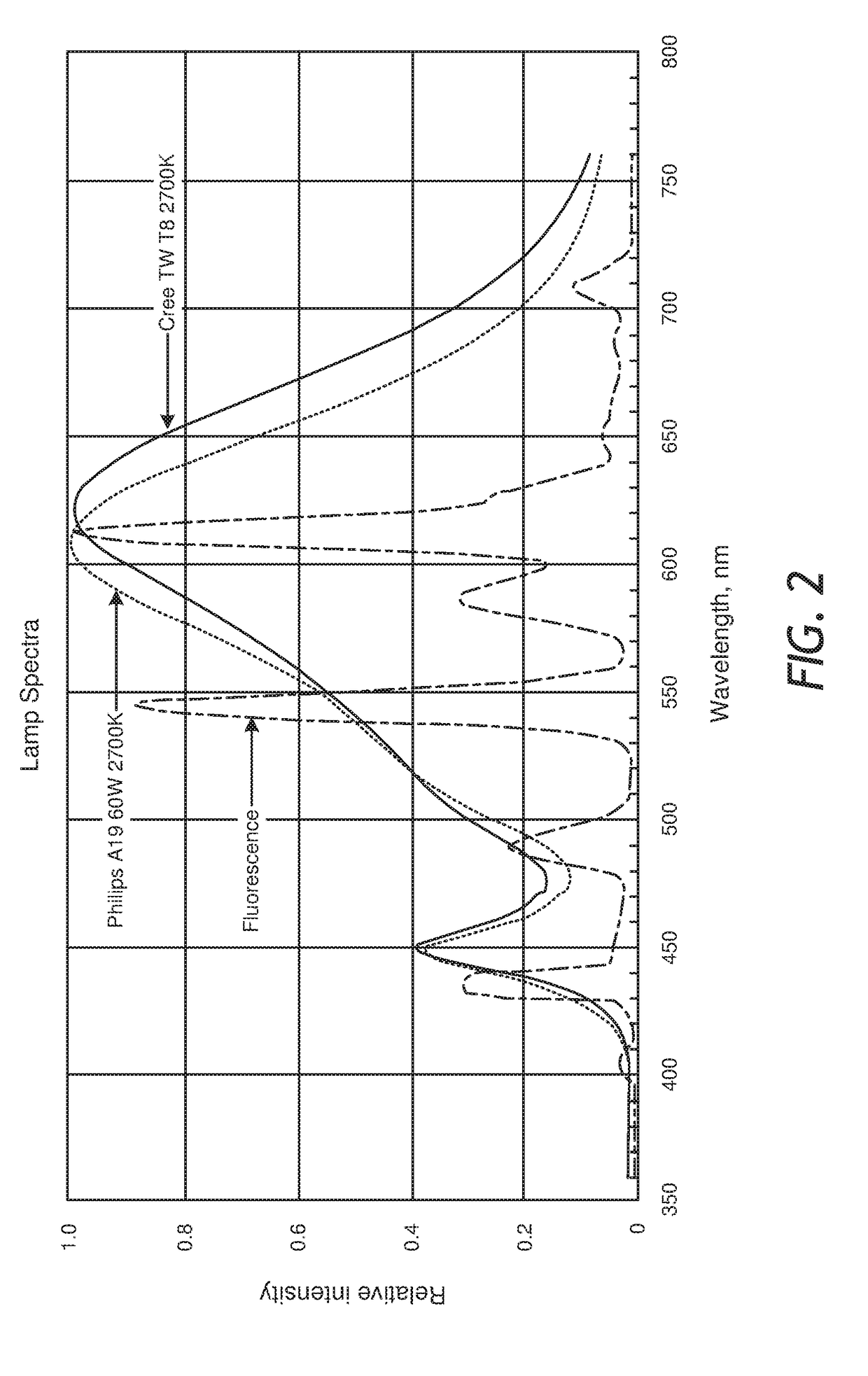Cosmetic compositions capable of producing localized surface plasmonic resonance in response to indoor and/or outdoor lighting sources
- Summary
- Abstract
- Description
- Claims
- Application Information
AI Technical Summary
Benefits of technology
Problems solved by technology
Method used
Image
Examples
example 1
Prophetic Method of Making Plasmonic Noble Metal Nanoparticles
[0058]Seeded growth is the major method for producing gold nanorods. The sub 2 nm seed is synthesized by adding HAuCl4 (0.01 M) into a CTAB (0.1 M) solution. After mixing for 30 minutes, chilled NaBH4 will be added under vigorous stirring. Then the mixture will be heated gently for about 20 minutes at 60° C. to obtain the seed solution. The growth solution will be include 0.1 M CTAB, 0.01 M HAuCl4, 0.01 M AgNO3, and 0.1 M Ascorbic acid. The seed solution will be added to the growth solution to obtain gold nanorods. The Aspect ratio will be tuned by adjusting the conditions of the growth solution; including the CTAB concentration, silver ion concentration, HAuCl4 concentration, growth temperature and duration, and solvent. Potential suppliers of nanoparticles are Nanopartz Inc., Loveland, Colo. (USA), NanoComposix, Inc. San Diego, Calif. (USA) and Sona Nanotech Ltd (Canada).
##ic example 2
Prophetic Example 2
Blends of Plasmonic Noble Metal Nanoparticles
[0059]The following procedure can be followed to identify appropriate plasmonic noble metal nanoparticle blends or combinations (e.g., combinations of gold nanorods having different plasmonic peaks) that can be used in the topical skin compositions of the present invention. First, a selection of specific gold nanorods having different aspect ratios can be identified. As discussed above, the differing aspect ratios can result in different plasmonic peaks, with larger aspect ratios resulting in plasmonic peaks that have a longer wavelength and smaller aspect ratios resulting in plasmonic peaks having a shorter wavelength. Second, evaluation of the gold nanorods can be performed by comparing the areas under the absorbance peaks of the nanorods vis-à-vis a gold spherical nanoparticle. By way of example, FIG. 1 provides an absorbance comparison of gold (Au) nanospheres (NPS) having a diameter of 30 nm with gold (Au) nanorods...
##ic example 3
Prophetic Example 3
Preparation of a Topical Skin Care Composition and Efficacy of the Composition
[0060]The following includes an in vitro bioassay that can be used to measure the anti-oxidant capacity of any one of the plasmonic noble metal nanostructures or combinations of such nanostructures disclosed in the specification. The assay relies on the ability of a sample formulation having the nanostructures of the present invention to inhibit the oxidation of ABTS® (2,2′-azino-di-[3-ethylbenzthiazoline sulphonate]) to ABTS®+by metmyoglobin. The capacity of the nanostructures present in the formulation to prevent ABTS oxidation is compared with that of Trolox, a water-soluble tocopherol analogue, and is quantified as molar Trolox equivalents. Anti-Oxidant capacity kit # 709001 from Cayman Chemical (Ann Arbor, Mich. USA) can be used for this in vitro bioassay. The protocol can be followed according to manufacturer recommendations. A light source can be used that would trigger an LSPR re...
PUM
 Login to View More
Login to View More Abstract
Description
Claims
Application Information
 Login to View More
Login to View More - R&D
- Intellectual Property
- Life Sciences
- Materials
- Tech Scout
- Unparalleled Data Quality
- Higher Quality Content
- 60% Fewer Hallucinations
Browse by: Latest US Patents, China's latest patents, Technical Efficacy Thesaurus, Application Domain, Technology Topic, Popular Technical Reports.
© 2025 PatSnap. All rights reserved.Legal|Privacy policy|Modern Slavery Act Transparency Statement|Sitemap|About US| Contact US: help@patsnap.com



